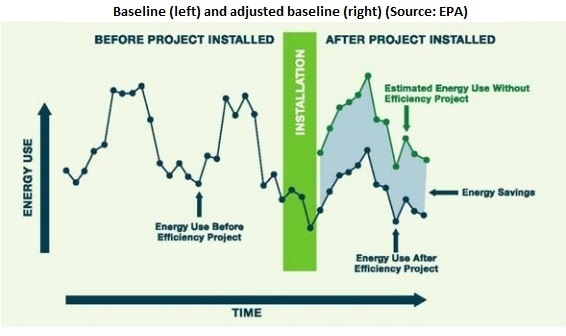By Colin Walker | Tue, March 8, 16
When I think of today’s changing energy efficiency landscape, I feel as though I am riding a rollercoaster. The paradigm-shifting developments in New York and California for example, are turning my preconceived notions of energy efficiency upside down – as if I was on some Universal Studios thrill ride.
One specific area that has put me through multiple corkscrews and loop-de-loops, has been the topic of M&V 2.0. Or is it EM&V 2.0? Maybe auto M&V? Talk about a wild ride! Figuring out the appropriate term to use is difficult enough, let alone understanding the concept and all the potential impacts.

In any case, whichever catch phrase you use, the meaning is clear: the future of evaluation has arrived, it is going to have an impact, and we all need to do our best to hold on tight and keep arms and legs inside the ride at all times.
Right now, you’re probably wondering about those impacts I mentioned, contemplating what this future will look like, and trying to figure out how M&V 2.0 will impact you. Thanks to a recent report released by Northeast Energy Efficiency Partnerships, entitled The Changing EM&V Paradigm, you don’t have to spend much time wondering. This report answers all of those questions, and offers a lot more.
KEY FINDINGS
The findings and recommendations of this paper are organized to address two broad categories:
- Advanced data analytics/program enhancements
- Advanced data availability/leveraging new data
From within this framework, the report discusses challenges, the potential of standardization for software tools, and ways that program administrators and regulators can prepare for this new landscape. The report also discusses what I believe to be the most intriguing - and not to mention most exciting - aspect of M&V 2.0: the benefits. Some of those benefits include:
- faster savings opportunity assessments via real-time program performance feedback loops enabling opportunities to correct programs and optimize them;
- a new way to engage with customers via virtual audits; and
- more thoroughly tested and vetted analytics and can reduce the time it takes for evaluation, and therefore, reduce evaluation costs.
 What does all this mean? Well, not much at the moment because there is a gap between this new landscape of the future and current evaluation practices. This ACEEE and NEEP press release states it perfectly by saying, “these tools are not necessarily aligned with many current state public utility commission energy efficiency program evaluation policies.” However, this is sure to change – and change quickly – because the report makes two things very clear:
What does all this mean? Well, not much at the moment because there is a gap between this new landscape of the future and current evaluation practices. This ACEEE and NEEP press release states it perfectly by saying, “these tools are not necessarily aligned with many current state public utility commission energy efficiency program evaluation policies.” However, this is sure to change – and change quickly – because the report makes two things very clear:
1. M&V 2.0 tools are here and they are here to stay;
2. Evaluators, regulators, and program administrators will need to begin to adapt and adjust to the changing energy efficiency landscape by including more M&V 2.0 type programs
NEXT STEPS
If you’re still not feeling completely confident about M&V 2.0 or you are so invigorated by the opportunity that M&V 2.0 has, I have a suggestion: consider attending NEEP’s EM&V Forum’s Annual Public Meeting. The Annual Public Meeting, entitled The Future of Evaluation, brings together state officials (utility and air regulators, state energy office directors), program administrators, evaluation contractors, system planners, NGOs, software as a service (SaaS) vendors and others to learn and share information about opportunities, challenges and solutions to shaping the future of evaluation.
Both the preceding M&V 2.0 workshop and the Annual Public Meeting itself will be filled with interesting, relevant, and exciting sessions that will help every attendee to better understand the future of evaluation and what it means for you. As an added bonus, Forum funding states (you know how you are) will have the opportunity to learn about piloting these M&V 2.0 tools.
Whether you decide to register for the event or not, you can be sure of this: NEEP and the EM&V Forum are committed to delving deeper into issues like the future of evaluation and next generation energy efficiency as a whole. So please continue to follow NEEP, and together, we will do our best to hold on for what is sure to be a wild ride.
